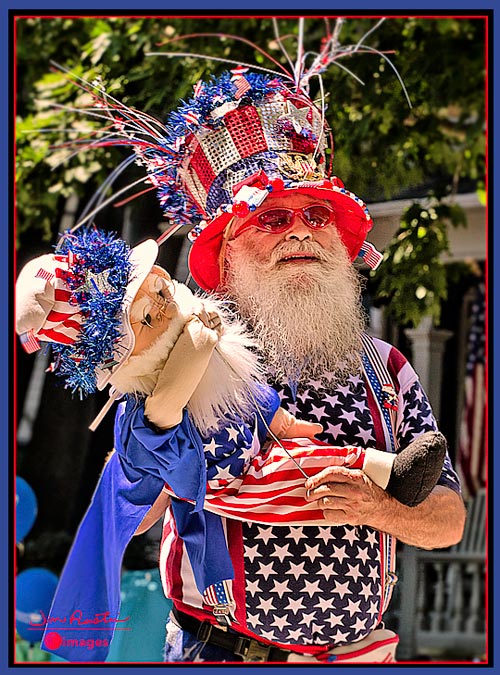Celebrate an inside look at Americans on Parade with photographer Jim Austin. After photographing parades for 7 years, he has a few tips for capturing Independence Day and takes us inside the oldest parade in the U.S.A., as well as to other unique American parades.

Everybody loves a parade! Raise your camera to catch the passing militia and you may inhale the scent of horses, or smell the acrid tang of smoke from black powder musket fire on a cobble-stoned main street. Gazing down the street, you may see a juggler pedaling on a unicycle. As drum and bugle corps pass before your eyes, you might feel the booming of bass drum in your chest. Perhaps tears well up in your eyes as you watch veterans march down the middle of the road, marching in step to the rhythmic strains of a John Philip Sousa tune. Believe it or not, you are in America, watching an all-American parade.
Words do not capture the emotions of a parade. American parades, old or new, long or short, celebrating freedom or remembering past glory―each of these events offer beautiful scenes for your photography. Capturing Americans on parade will challenge your composition skills, timing, and portraiture style.
The oldest parade in America does indeed have horses, musket fire and fife and drum music. It’s in Bristol, Rhode Island. Since 1785, the Town of Bristol has hosted the oldest continuous Independence Day party in America, so this July 4th marks the 227th parade.
After years of photographing parades,
a work flow emerged, so I’d like to share a few
Parade Photo Tips.
Image Stabilization:
Leave your tripod at home. Take your image stabilization lenses or be sure image stabilization is turned on in your camera settings. For instance: Canon’s new 40 mm STM lens would be a great choice for those candid parade shots, because of its low profile and fast, quiet operation.
Filters:
Bring along a polarizing filter. It’s useful for digital images to control contrast and take distracting shiny reflections off cars and floats.
Lenses:
Grab a macro or close-focusing wide angle lens. The wide angle is ideal for including an entire float, or for family/group portraiture. With the macro, try to concentrate on a unique detail you have never seen before, then choose your widest aperture and get in as close as your lens will focus.
Capture the Colors:
Parades are filled with color, so make the most of it on July 4th. Capture them all – red on red, red on blue, blue on blue, and red, white and blue.
Portraits:
Get model releases for all portraits, and if you photograph children, talk to their parents and, very pleasantly, get a signed model release, even when you are in public. It will make life easier later on.
Panning:
Take some photographs with slow shutter speeds and pan across the moving parade. Hold the camera with a firm grip and brace your arms.
No matter the place or the cause, across America we all come together in a parade to celebrate our freedom. Joining together, we wave the flag as we join our fellow Americans on parade. An American parade is a unique blend of freedom, theater, pride, symphony, and history. Old and young, everybody loves a parade!
Text and Images © Jim Austin, M.A.

Leave a Reply